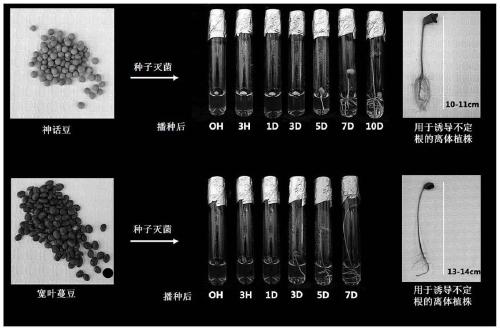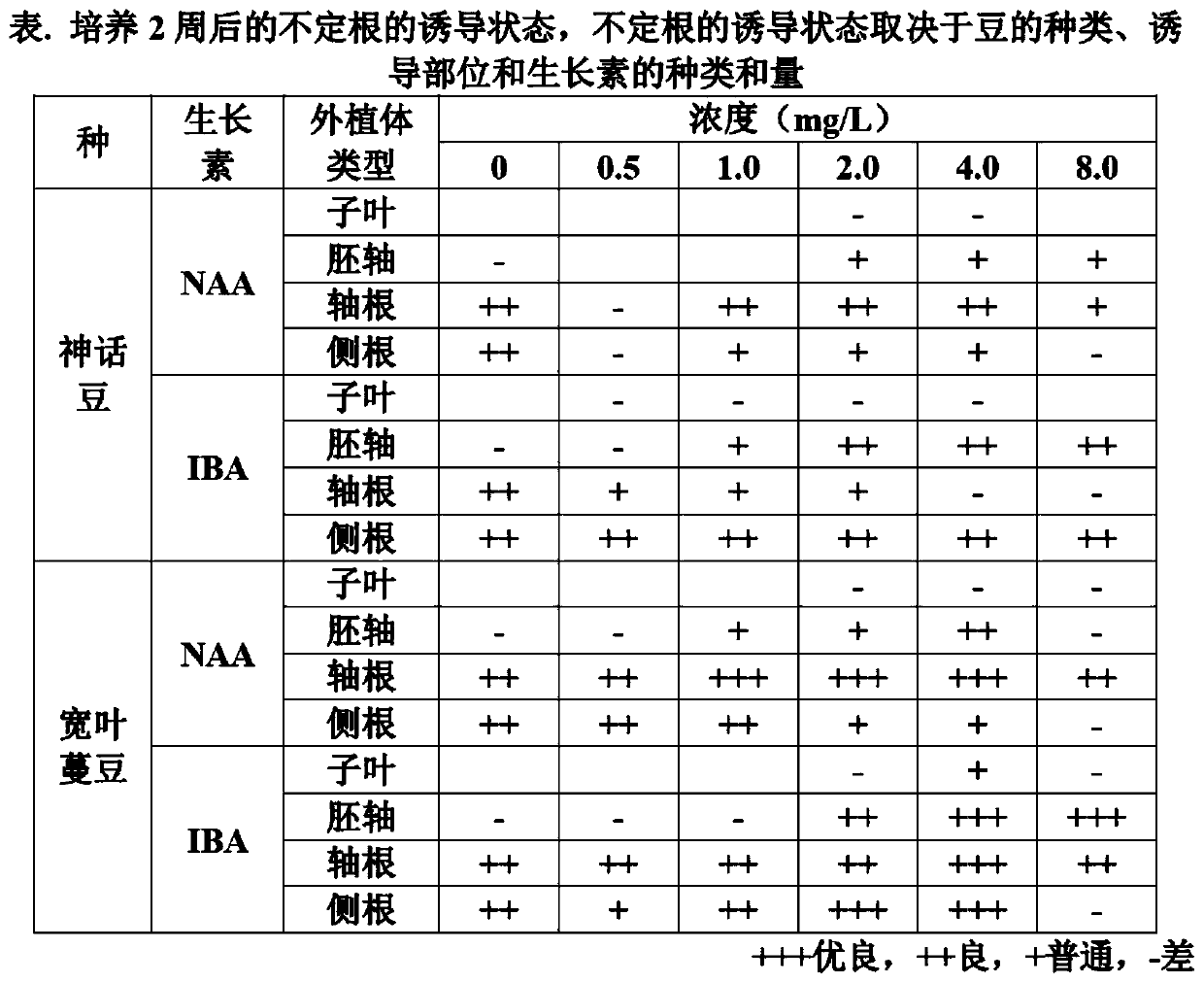Culturing method for cultured leguminous roots having increased coumestrol content
A technology of coumestrol and culturing method, which is applied in the directions of horticultural methods, tissue culture, cell culture medium and the like, and can solve problems such as pathways and complex chemical structures for which a synthesis method of coumestrol has not yet been found.
- Summary
- Abstract
- Description
- Claims
- Application Information
AI Technical Summary
Problems solved by technology
Method used
Image
Examples
preparation example 1-1
[0069] [Preparation Example 1-1] Germination of bean seeds and in vitro plant induction
[0070] Use 2% sodium hypochlorite to sterilize each surface of Myth bean seeds and Bean bean seeds for 20 min and wash 3 times with sterile water. Then, the plants were induced in 1 / 2 MS medium (Murashige and Skoog medium) supplemented with 30 g / L sucrose at 25±1°C under light conditions for 2 to 3 weeks.
[0071] The procedure for inducing isolated plants from leguminous seeds is as figure 1 shown.
preparation example 1-2
[0072] [Preparation Example 1-2] Induction of Bean Cultured Roots
[0073] The cotyledons, hypocotyls and radicles from the induced plants were cut into about 1 cm, and treated with IBA (indole butyric acid) and NAA (naphthalene acetic acid) in 1MS medium supplemented with 30 g / L sucrose, kept at 22±1° C. for 2 to 3 weeks under dark conditions to induce cultured roots.
[0074] Depending on the type of beans, the induction site, and the type and amount of induction of the auxin, the induction state such as figure 2 and image 3 shown.
experiment example 1
[0075] [Experimental Example 1] Determination of dry matter productivity and coumestrol content of cultured roots depending on bean variety, induction site, and type and amount of auxin
[0076] The dry matter productivity of the dried bean culture roots of Preparation Example 1-2 was measured. The result is as Figure 4 shown. The growth state of the bean cultured root differs depending on the kind of bean and the induction site. In particular, after 4 weeks of cultivation, the net weight of cultured roots derived from the radicles of Myth bean increased by 12.5 times relative to the initial value. The final dry matter productivity was also excellent at 4.1 g / L.
[0077]Further, the dried bean culture roots of Preparation Example 1-2 were extracted in 80% (w / v) ethanol at room temperature for 24 hours. The obtained extract was filtered with filter paper, and dried by evaporating the solvent to obtain a powder. Then, the powder was diluted into a 1% solution to prepare th...
PUM
 Login to View More
Login to View More Abstract
Description
Claims
Application Information
 Login to View More
Login to View More - Generate Ideas
- Intellectual Property
- Life Sciences
- Materials
- Tech Scout
- Unparalleled Data Quality
- Higher Quality Content
- 60% Fewer Hallucinations
Browse by: Latest US Patents, China's latest patents, Technical Efficacy Thesaurus, Application Domain, Technology Topic, Popular Technical Reports.
© 2025 PatSnap. All rights reserved.Legal|Privacy policy|Modern Slavery Act Transparency Statement|Sitemap|About US| Contact US: help@patsnap.com



